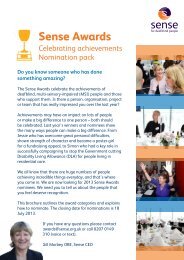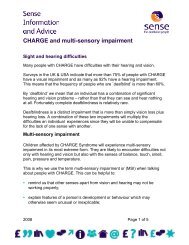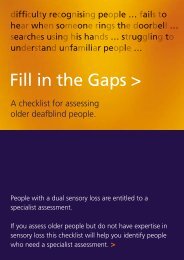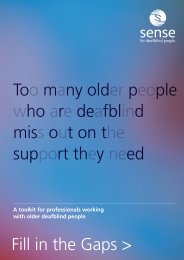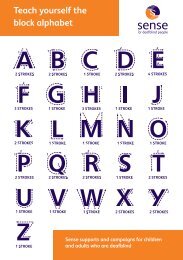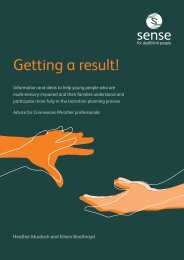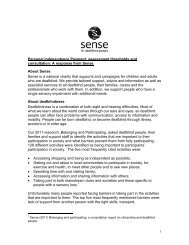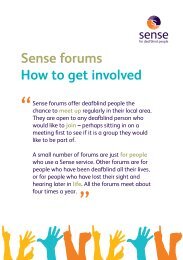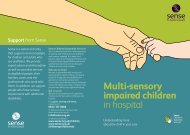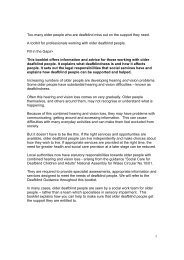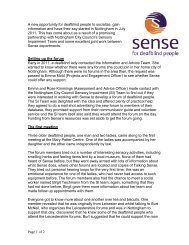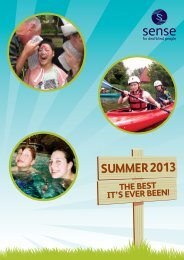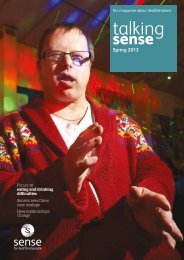MSI Unit Curriculum - Sense
MSI Unit Curriculum - Sense
MSI Unit Curriculum - Sense
You also want an ePaper? Increase the reach of your titles
YUMPU automatically turns print PDFs into web optimized ePapers that Google loves.
<strong>MSI</strong> <strong>Unit</strong> <strong>Curriculum</strong>: Phase 4Pupils are increasingly expected to function as part of a group. They areencouraged to attend to peers as well as to staff, help and learn from each other,and manage the social and communicative aspects of group learning alongsidethe session’s content. Many pupils will need specific support to work in this way;for example, identification by staff of each new speaker or assistance to find anduse a specific learning resource.Pupils are included with other groups of peers (using similar communicativemodes) for social activities, to give a wider range of opportunities for interaction.Pupils are supported in hosting visitors to the school and in communicatingwhere appropriate with other strangers. Staff model and discuss with pupils thedifferent social rules which apply to interaction with unfamiliar people. Visitorsand others are given guidance on how to respond (for example, accepting longerpauses in interaction than would normally occur).Established group activities such as snack time and collective worship aremodified to encourage pupils to organise sessions co-operatively, with adultsupport only if needed.Break times are often left unstructured, with pupils left to choose and organisetheir own activity.Pupils develop independent relationships with adults in a range of roles (cateringstaff, specialist teachers, shop staff etc.), rather than such relationships beingmediated through keyworkers.CommunicationPupils understand and use symbolic communication (speech, signs, symbols,pictures or miniaturised/partial objects of reference, accessed directly orthrough ICT), supplemented by non-verbal communication.They link two or more words, signs or symbols in expressing ideas. They use arange of communicative intentions, for example greeting, drawing attentionto, requesting and rejecting. In communication with adults, they show jointattention and emergent understanding of conversational rules such asgaining attention, turn-taking and maintaining a topic. Their communicationmay still be idiosyncratic in form and they may be unwilling to communicatewith less familiar people.Staff model increasingly complex language structures, in their communicationwith pupils and with each other. Staff routinely communicate with each otherusing modes that are accessible to pupils (for example, signing to each other ifpupils use sign), but they no longer restrict the complexity of messages to thatalready understood by pupils.87



